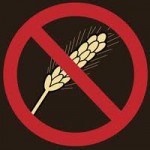 An estimated 3 million people in the United States have celiac disease. In people with celiac disease, foods that contain gluten trigger production of antibodies that attack and damage the lining of the small intestine. Such damage limits the ability of celiac disease patients to absorb nutrients and puts them at risk of other very serious health problems, including nutritional deficiencies, osteoporosis, growth retardation, infertility, miscarriages, short stature, and intestinal cancers.
An estimated 3 million people in the United States have celiac disease. In people with celiac disease, foods that contain gluten trigger production of antibodies that attack and damage the lining of the small intestine. Such damage limits the ability of celiac disease patients to absorb nutrients and puts them at risk of other very serious health problems, including nutritional deficiencies, osteoporosis, growth retardation, infertility, miscarriages, short stature, and intestinal cancers.
On August 2, 2013, FDA issued a final rule defining “gluten-free” for food labeling, which will help consumers, especially those living with celiac disease, be confident that items labeled “gluten-free” meet a defined standard for gluten content.
- Constituent Update - Foods Labeled Gluten-Free Must Now Meet FDA's Definition
- Questions & Answers: FDA's Final Rule on Gluten-Free Labeling Updated August 5, 2014
- Consumer Update: What is Gluten-Free? FDA Has an Answer - People with celiac disease can now have confidence in the meaning of a “gluten free” label on foods.
- A New Era of “Gluten-free” Labeling Updated August 5, 2014

Comments